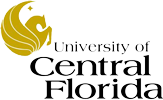Contact Person: Grunwald, Sabine
Collaborators: G. L. Bruland, N. B. Comerford, W. G. Harris, D. B. Myers, D. V. Sarkhot, G. M. Vasques
Institutions: University of Florida, University of Hawaii at Manoa
Funding Agency: U.S. Department of Agriculture (USDA) -National Institute of Food and Agriculture (NIFA)
Start: September 2009 End: September 2010
Status: Funded
Filed Under: Land
Abstract: The goal of this research is to assess the effects of land cover/land use (LC/LU) change on carbon stocks giving special attention to translating site-specific carbon pools (labile, recalcitrant and total carbon) to landscape scales. Our objectives are to: (i) Determine soil carbon pools in various ecosystem types across a large southeastern landscape (Florida) cutting across soil nutrient, LC/LU and climatic/hydrologic gradients; (ii) Investigate the strength and magnitude of relationships between environmental landscape properties and corresponding carbon pools within a GIS; (iii) Derive functional models relating measured soil carbon fractions to soil spectra in the visible/near-infrared (VNIR) range to develop rapid and cost-effective soil carbon prediction models; (iv) Model change trajectories, i.e. assess historic and actual soil carbon stocks and turnover rates in various ecotypes; and (v) Upscale site-specific VNIR-derived and laboratory-measured soil carbon pools to the landscape scale by modeling spatial autocorrelations and covariations with environmental landscape properties; and validate the derived geospatial soil carbon models using an independent dataset. Our methodology is based on comprehensive historic (~1,300 soil samples) and reconnaissance (~1,000) soil samples representing various ecotypes identified using a a stratified-random sampling design (strata: land use-suborder combinations). Various hypotheses will be tested to investigate relationships between soil carbon pools and environmental landscape properties using analysis of variance, multivariate regression methods and Canonical Correlation Analysis. Chemometric modeling will be used to relate spectra to analytical measures. Hybrid geospatial methods will be used to develop soil carbon models for Florida. This proposal addresses USDA's priority research areas including spatially-explicit soil carbon modeling.











